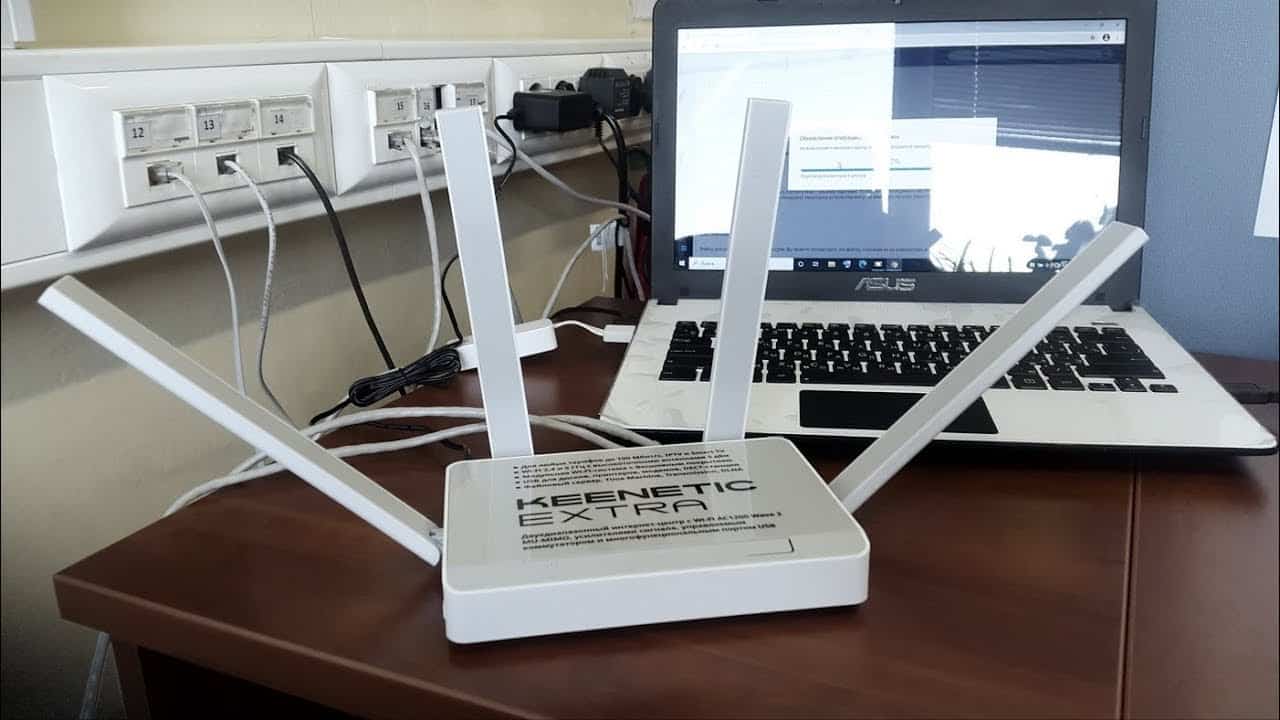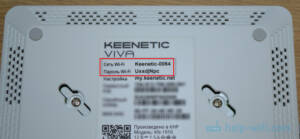Introduction to PPPoE connections on Keenetic
PPPoE (Point-to-Point Protocol over Ethernet) is a protocol used to establish an Internet connection via Ethernet. In this article, we will look at how to set up a PPPoE connection on Keenetic. Before you begin the setup, make sure you have the following information: - Login and password from your ISP - Gateway IP address - DNS servers The next step is to open the Keenetic web interface. In the browser address bar, enter the IP address of your router and press Enter. Enter the login and password to enter the router settings. Next, go to the 'Internet' section and select 'PPPoE'. Enter the login and password you received from your ISP. Establish a connection and check if the Internet is working. If you are using a static IP address, enter it on the connection setup page. If you have a dynamic IP address, make sure that the 'Obtain an IP address automatically' option is enabled. Also, don't forget to configure the DNS servers you received from your ISP so that your router can handle DNS requests correctly. In conclusion, a PPPoE connection on a Keenetic is a simple and convenient way to connect to the Internet. If you follow this guide, you will be able to quickly set up a connection and enjoy fast Internet. PPPoE is an abbreviation for Point-to-Point Protocol over Ethernet. It is a protocol that is used to establish a connection between a client and an Internet provider. With PPPoE, you can access the Internet using your credentials provided by your ISP.
Using PPPoE on Keenetic allows you to manage your Internet connection and provide a more secure and stable connection. Additionally, PPPoE can help you reduce the time it takes to set up your router, thanks to Keenetic's simple and intuitive interface.
To start using PPPoE on Keenetic, you need to go to the 'Internet Settings' section and select 'PPPoE' as the connection type. Then enter your credentials provided by your ISP and save your settings.
Now your Keenetic router will establish a connection to the Internet via PPPoE. You can also configure additional connection settings such as MTU (maximum packet size) if your ISP recommends it.
Using PPPoE on Keenetic is simple and convenient, and also provides a more secure and stable connection. If you are new to setting up routers, follow our guide to set up PPPoE on Keenetic without any hassle.
If you have a Keenetic router, then you probably know that it can be used to connect to the Internet via a PPPoE connection. However, in some cases, you may want to skip this process and configure Keenetic directly to work with the Internet.
To do this, you need to go to Keenetic settings and select the 'Internet' tab. Here you will find the 'PPPoE' option and you can disable it.
After this, you can configure the router to work with your ISP directly. This is usually done through DHCP, which allows you to automatically obtain an IP address from your ISP.
If you have a static IP address, then you will need to enter it manually in the Keenetic settings. To do this, go to the 'IP addresses' section and select 'Network address'. Here you can enter your IP address, subnet mask and default gateway.
In general, passing PPPoE connections on Keenetic is quite simple. However, if you encounter any problems, do not hesitate to contact the documentation or your Internet provider.
The main reasons for missing PPPoE connections on Keenetic
PPPoE connections are a method of connecting to the Internet that is used by many providers. However, sometimes there are problems connecting to the Internet via PPPoE on Keenetic. In this article we will look at the main reasons for missing PPPoE connections on Keenetic.
1. Incorrect PPPoE connection settings. If the PPPoE connection settings on Keenetic are not configured correctly, then connecting to the Internet may not be possible. Pay attention to the username and password settings, as well as the VLAN and MTU settings.
2. Problems with the provider. Sometimes problems connecting to the Internet via PPPoE can be caused by problems with your ISP. For example, the provider may temporarily turn off the network or carry out technical work.
3. Problems with equipment. If you have problems connecting to the Internet via PPPoE on Keenetic, then there may be a problem with the router or modem itself. Make sure all equipment is configured correctly and is working smoothly.
4. Low signal level. If the signal level on your router is low, then this may be the cause of problems with connecting to the Internet via PPPoE. Make sure your router is fairly close to the signal source.
In conclusion, if you have problems connecting to the Internet via PPPoE on Keenetic, then make sure that all settings are configured correctly, the provider is working smoothly, the equipment is configured correctly and the signal is strong enough. If the problem persists, contact a specialist for help.
Step by step: how to pass PPPoE connections on Keenetic
If you are using a Keenetic router to connect to the Internet via PPPoE, then sometimes you may need to skip this type of connection. For example, if you want to use a different connection type or if your ISP does not support PPPoE.
Here are step-by-step instructions on how to skip PPPoE connections on Keenetic:
1. Go to the Keenetic router settings menu.
2. Select the 'Internet' tab and go to the 'Connection' tab.
3. Find the corresponding PPPoE connection and click on the 'Delete' button.
4. Then go to the 'Create connection' tab and select the desired connection type.
5. Enter the required information for the new connection and save the changes.
Now you can use the new connection without PPPoE on your Keenetic router.
Follow these instructions to easily skip PPPoE connections on Keenetic and enjoy a fast and stable Internet connection.
Debugging and Troubleshooting
During the process of setting up a PPPoE connection on Keenetic, various problems may arise, such as lack of Internet connection, low data transfer speed, or periodic connection interruptions. However, do not despair, since most problems can be solved on your own, without the help of specialists.
The first step in solving problems with a PPPoE connection is to check that the entered settings are correct. Make sure that you have correctly entered the login and password from the provider, and also selected the correct connection type (PPPoE) and configured its parameters in accordance with the provider's recommendations.
If the PPPoE connection settings are correct, but the problem is still not resolved, then the next step is to check the cables and equipment. Make sure all cables are connected to the correct ports and the equipment is in good working order.
If the steps listed above did not help solve the problem, then you can try rebooting Keenetic and the modem. Also, you need to check the firmware update on Keenetic, since some problems may be associated with an outdated firmware version.
If all of the above methods do not help resolve the problem, then you need to contact the provider’s specialists for help.
By following these simple recommendations, you can quickly and easily set up a PPPoE connection on Keenetic and enjoy fast and stable Internet access.
How to check that the PPPoE connection was successfully passed on Keenetic
In order to ensure the successful establishment of a PPPoE connection on Keenetic, you need to follow a few simple steps:
1. Go to the Keenetic router settings by clicking on the 'Settings' button in the upper right corner of the screen.
2. In the menu that opens, select 'Internet' and go to the 'PPPoE client' section.
3. Check the correctness of the entered credentials (login and password) to connect to the Internet.
4. Click the 'Test connection' button to ensure that the connection is successful.
5. If the connection is not established, check the Ethernet cable connection between the router and the modem, as well as the modem settings.
If all settings are correct and the connection is not established, contact your Internet service provider for assistance. By following these simple instructions, you can ensure that a PPPoE connection is successfully established on Keenetic. If you are faced with the problem of passing PPPoE connections on your Keenetic, do not despair. This is a common problem that can occur due to various reasons, but it can be resolved without much effort.
The first step to solve this problem is to check the PPPoE connection settings on your Keenetic. Make sure you have entered the correct username and password for your internet service provider and that you have an active internet connection.
If you are still facing the problem, try rebooting your Keenetic and modem. This may help restore the connection and resolve the issue.
If rebooting doesn't help, try checking for updates for your Keenetic. New versions of the software may contain fixes for various problems, including PPPoE connections.
Finally, if these steps do not resolve the issue, contact your Internet service provider. They can provide additional support and help you resolve this issue.
In general, passing PPPoE connections on Keenetic can be solved with a few simple steps. Check your settings, reboot your Keenetic and modem, update the software and contact your Internet service provider for help if this does not help.
Read further:






